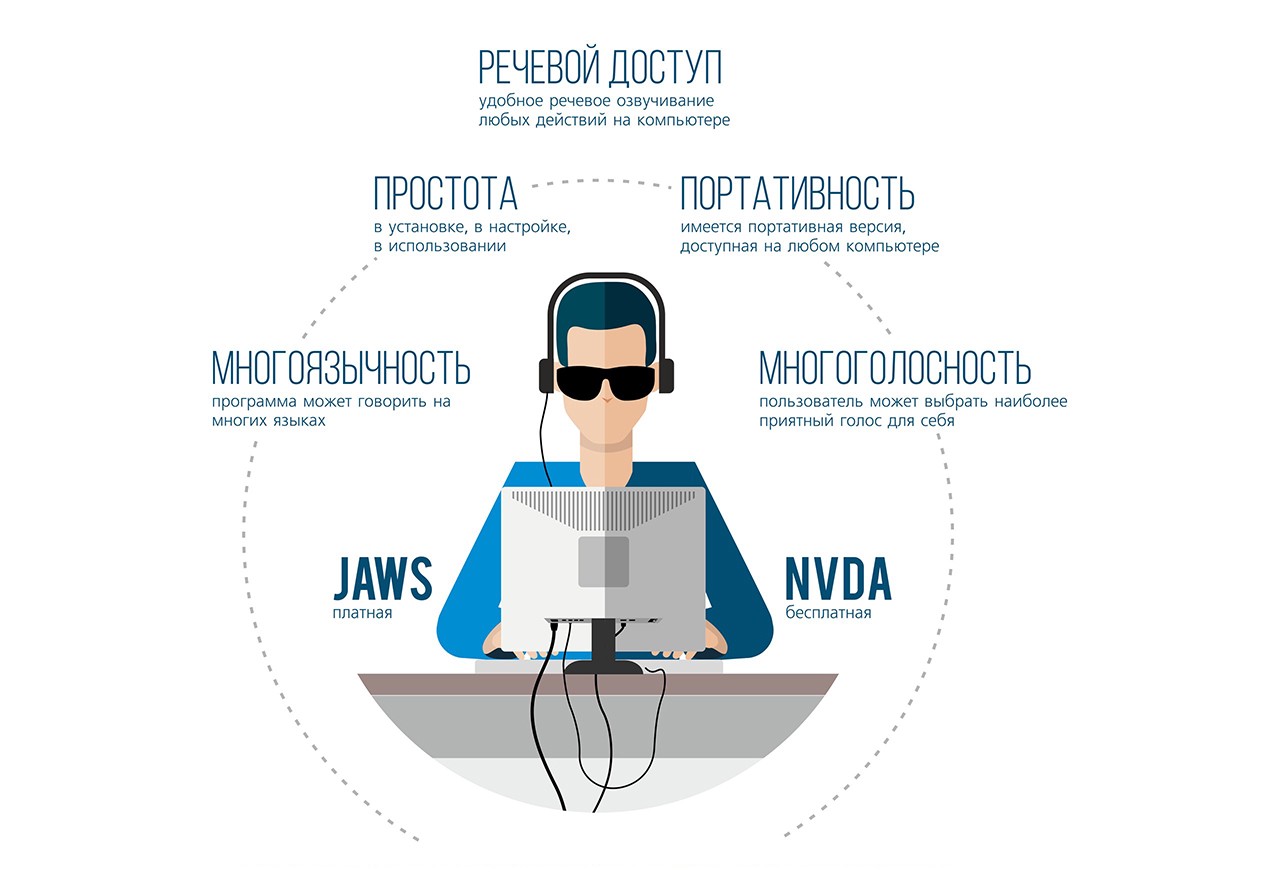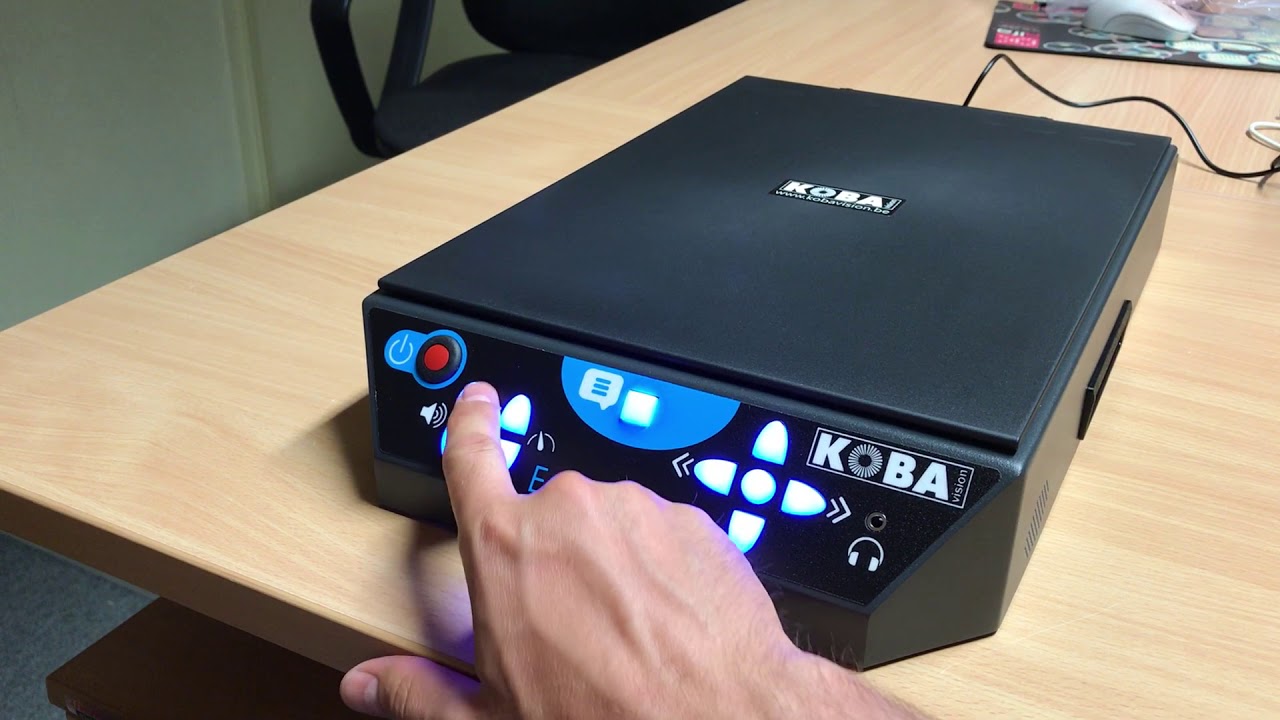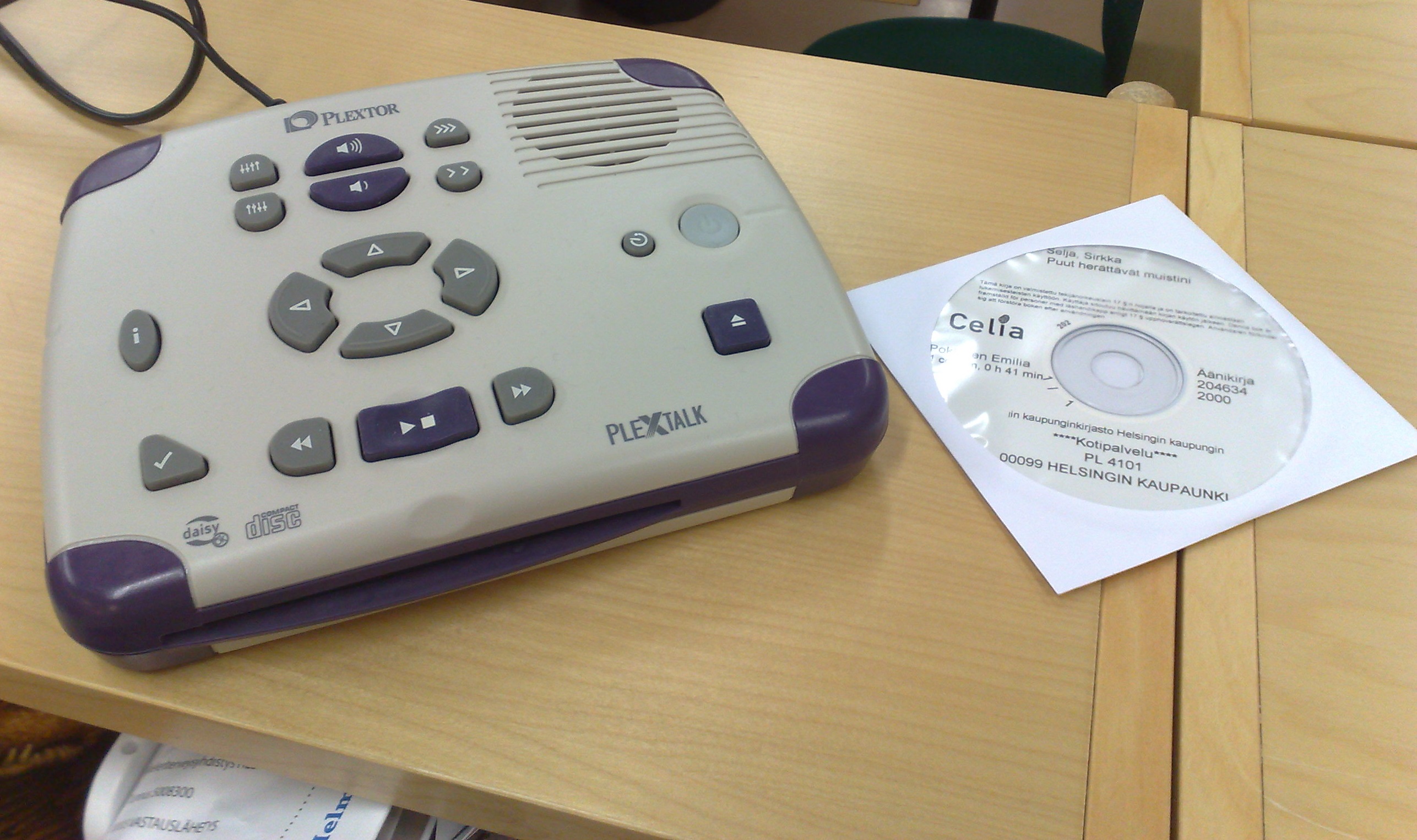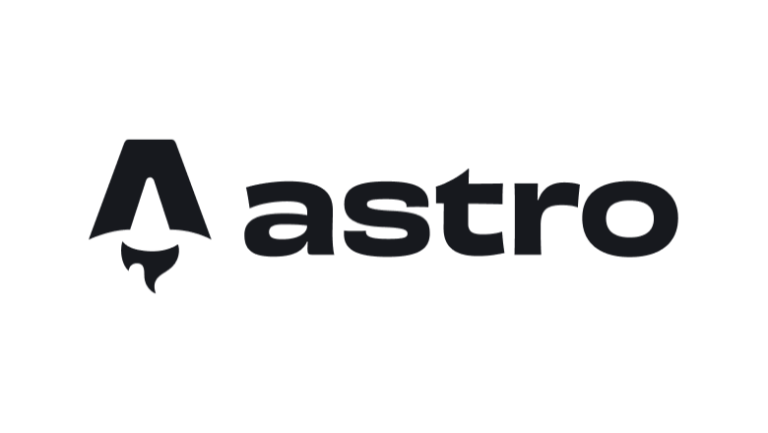Technologies that help the blind learn English
Modern technologies allow them to take an almost full part in the life of society and use its benefits, but what about the study of foreign languages?
In this article we will analyze technologies and techniques that allow the blind and visually impaired to successfully learn English.
Who are the blind and visually impaired
In the international classification of diseases (11th edition) it is considered to be visually impaired people with visual acuity from 5% to 10% (from 3/60 to 6/60). Under proper conditions, they can use the visual apparatus to perceive the world.
People who have a visual acuity of 0 to 5% (below 3/60) are considered blind. In some cases, they may have little photosensitivity and even distinguish between the general forms of objects, but are not able to use vision as the main tool for perception.
Partially seers can use sight for training. Yes, working with the visually impaired requires a number of precautions and measures to protect residual vision, but in general they can study reading and writing.
For the blind, completely different methods and technologies are required to study materials.
Difficulties for teaching the blind English
All existing English programs are more based on visual perception.
When studying vocabulary, students first study the spelling of a word, then its pronunciation, and then its use in sentences. The blind learn immediately pronunciation, so the main difficulty for them is homophones. Words that sound the same or very similar, but are spelled differently and have different meanings.
For example: “read” and “rid”, “bed” and “bad”.
Say right away, braille is used in learning English, but the main emphasis is still placed on listening to English and speaking English.
This is done from the standpoint of expediency.
In the Latin alphabet in Braille, part of the letters correspond to their sound counterparts in the Cyrillic alphabet, but this only interferes with the study of a foreign language.
“Jumping” from language to language, as they usually learn vocabulary, will not work – the Latin and Cyrillic letters of the Braille are partially the same, which will make it difficult for the student to fluently determine the language in which the word is written. It is enough for the seer to simply look at the word to understand that it is in English, then the blind must first read it, and then realize what it means. This too much increases the time for working with texts – the efforts spent simply do not correspond to the results obtained.
In addition, reading skills in Braille in a foreign language are unsuitable for daily use. For example, when using a computer, the blind is much more comfortable with a speech synthesizer that reads text from a computer screen than Braille displays that translate text into a Braille system and display it on a special tactile screen.
The complete lack of a methodology for teaching blind people foreign languages.
This is such a poorly studied field of study that it is quite difficult to organize full-fledged research, and to create a working teaching methodology is even more difficult.
That is why most teachers teach based on their own experience, and not on well-known and proven teaching methods. Of course, there are developments of schools for the blind, but studies on their effectiveness have simply not been conducted. The effectiveness of this format is often not ideal, but in fact there is no other option.
Teachers are independently looking for techniques and techniques that allow the blind and visually impaired to fully perceive the material and learn English.
The infrastructure for teaching the blind to something is extremely poorly developed.
Most teachers simply do not have technical tools that can simplify the learning process.
Yes, there are special schools for the blind, but due to the lack of a teaching methodology, not all students achieve at least any significant results. Even in millionaires, there can only be one school, and in smaller cities there may not be such schools at all. Therefore, most of those who would like to study English simply do not have the physical ability to get to an educational institution.
Technologies for helping the blind to learn English
Since the methodologies for teaching blind foreign languages are in their infancy, we will try to use the tools and technologies that are already available.
Audio courses and audio lessons

Of course, almost all audio lessons and listening exercises are only part of the English language learning ecosystem, which is used in conjunction with visual tools.
But there are quite a few audio courses that are fully implemented in audio format. And they are almost 100% suitable for the blind and visually impaired.
With their help, you can learn English up to the Intermediate level.
The main advantage of audio courses is that there are many of them and they are available. Almost all the courses in the English Driving Series are blind, so there is no shortage of materials.
You can even work with them yourself, without a teacher. And they also reveal daily English in some detail – in such courses there are a lot of thematic dialogues like “Shopping”, “Communication about the weather”, “How to ask for directions”.
Unfortunately, audio courses alone are not enough. They will not help to pump vocabulary. And even a high listening comprehension of English does not guarantee an understanding of the language as a whole. You can memorize certain phrases that courses offer, but this is not language proficiency, but mimicry.
Screen readers and voice synthesizers

If the blind or visually impaired has passed computer literacy courses for the blind and knows how to use a computer, it can be used to teach English.
In general, to use a computer, a blind person only needs a keyboard with a Braille and a screen reader.
Screen reader is a special program that voices everything that happens on the screen.
It allows blind people to understand what information is on the computer screen and how to interact with it.
There are 2 of the most popular screen readers on the market today:
- NWDA – A free screen reader that allows you to use all the basic functions of a computer using a voice synthesizer.
- Jaws – A paid program with a wider pool of capabilities, up to the built-in support for the most common programs (for example, MS Word, PDF readers, Google Docs) and the adaptation of Internet pages to the needs of the blind and visually impaired.
In general, a screen reader can help create a normal internal infrastructure for learning English, but there are a couple of serious nuances.
Firstly, online portals and language learning programs need to be individually adapted to the needs of the blind. This requires a fairly large investment. As of February 2020, there are simply no adapted online English language learning programs for Russian-speaking blind people.
Secondly, speech synthesizers are often mistaken in the pronunciation of words, which worsens the learning process as a whole. There are simply no synthesizers that work equally well with both Russian and English. Therefore, you must either install two synthesizers at once and get a bunch of compatibility problems, or be content with partly incorrect pronunciation.
This can be partially leveled with the help of online dictionaries, where you can reproduce the correct pronunciation of words, but still it greatly interferes with comfortable learning.
Reading machines

Reading machines are a special kind of scanners that read it when scanning text.
A similar tool is indispensable for working with large texts in English. Nevertheless, there are much more ordinary books than those printed in Braille.
In fact, the reading machine is a symbiosis of the scanner and voice synthesizer.
At levels up to and including Intermediate, you can not use it, replacing it with more accessible tools. But for full-fledged work with text at the levels of Upper-Intermediate, it is very useful.
DAISY player

DAISY (Digital Accessible Information System) is a special standard for recording digital audio books, which is specifically designed for the needs of the visually impaired and blind.
In fact, this system allows you to expand the standard features of audio books. Using a DAISY player, users can search for quotes and words in the text, record their own comments, and navigate chapters, sections, and lines. A special recording format allows you to slow down and accelerate the speed of audio playback without artifacts of sound compression.
The DAISY format allows the blind to interact even with complex forms of information, for example, encyclopedias or magazines.
With a visual display, you can even translate images into tactile form.
DAISY players, of course, cannot be considered common devices, but due to their interactivity, they can be successfully used to learn English.
Voice recorder or Tifloplayer

For the blind, this is almost the only adequate way to keep abstracts. Therefore, each student should have it.
Naturally, this should be a “talking” recorder, which allows the blind to fully use it.
In general, the recorder can be adapted in different ways: from recording class activities to homework. But it very much depends on the program that the teacher uses.
Formally, this is the most vague tool that can be adapted for learning English in a dozen ways.
Technology is only an auxiliary tool for learning English for the blind and visually impaired. We also need an experienced teacher who knows the principles of teaching a foreign language and can interpret the techniques for using them by the blind. However, the most important thing is the motivation and desire to learn.
But even completely blind people can learn languages and become polyglot. A wonderful example of this is the poet Vasily Eroshenko, who was blind as a child and already blindly thoroughly learned 11 languages and 22 more could understandably. The only instruments of the poet were only a turntable, recorded records with foreign speech and live communication with foreigners.
Living in Japan, he even wrote poetry in Japanese, which earned respect in the land of the rising sun. He also successfully translated works of other authors into Russian and Esperanto.
Eroshenko’s personality is, of course, completely outstanding. If anyone is interested, read it biography. Perhaps it is he who will inspire you to actively learn languages.
EnglishDom.com online school – inspire you to learn English through technology and human care
Only for readers of Habr first lesson with a teacher on Skype for free! And when you purchase classes, get up to 3 lessons as a gift!
Get it a whole month of premium subscription to the ED Words app for free.
Enter promotional code techbl on this page or right in the ED Words application. The promotional code is valid until 03/10/2021.
Our products:
- Learn English words in the ED Words mobile app
- Learn English A to Z in the ED Courses Mobile App
- Install the extension for Google Chrome, translate English words on the Internet and add them to study in the Ed Words application
- Learn English in a game form in the online simulator
- Build conversation skills and make friends in conversation clubs
- Watch the English life hack video on the EnglishDom YouTube channel







